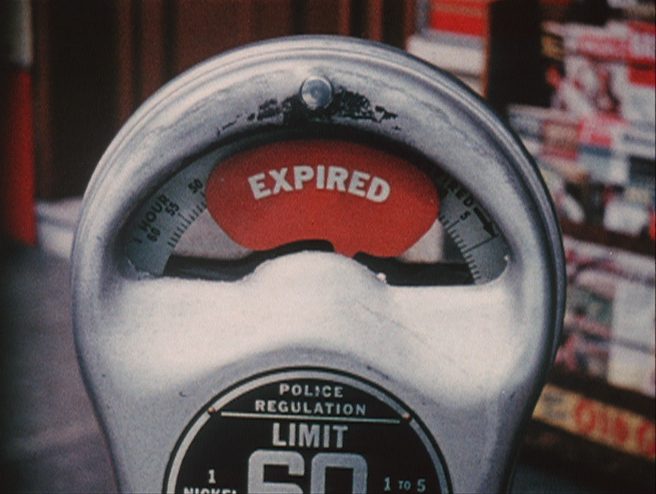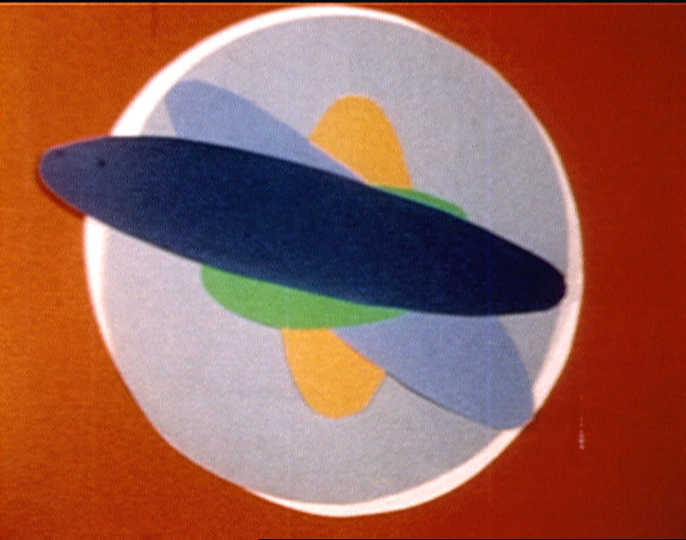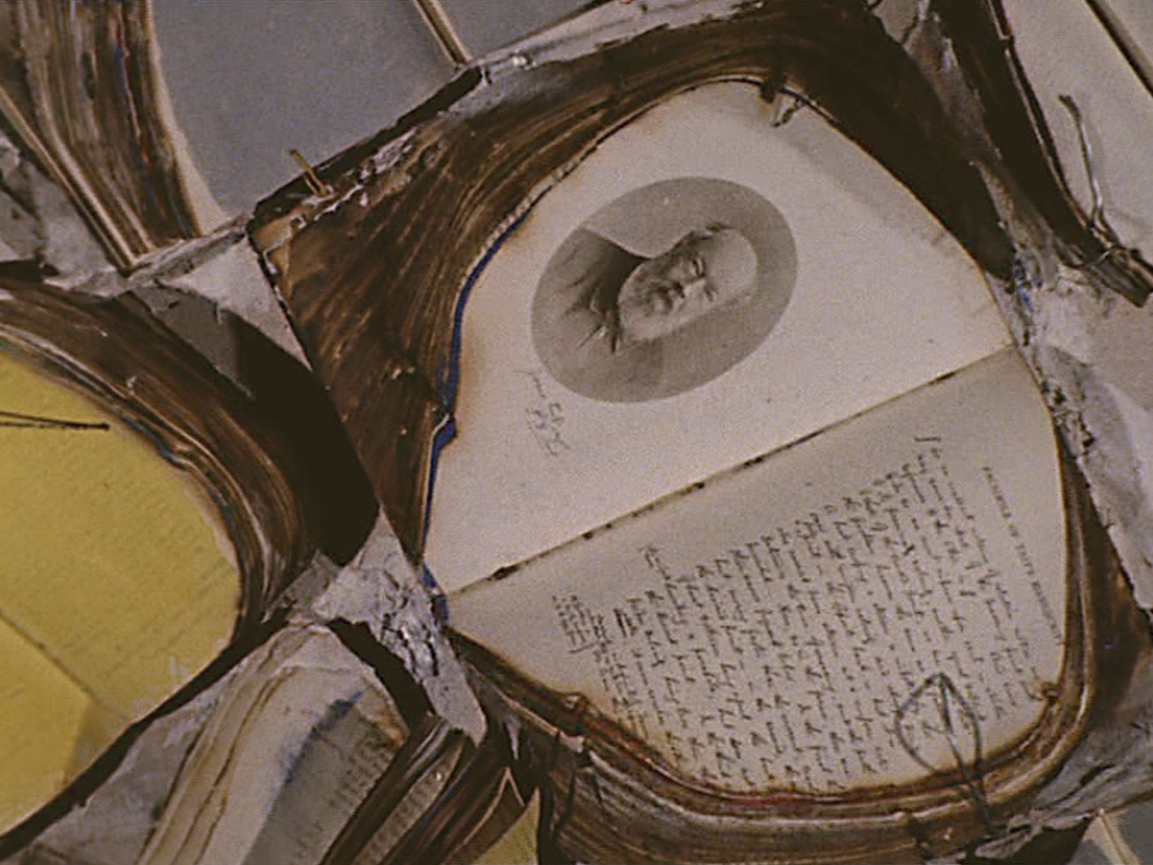TIME AND DESTRUCTION
19 February 2009
An evening of films including a short feature, some different kinds of cut-ups, and a very special trailer...
Christopher Maclaine,The End, 1953
Sound, colour, 35 mins, 16mm
Narrated by Christopher Maclaine. Photographed by Jordan Belson.
- TRAILER - c. 2 mins
'The End is a remarkable apocalyptic post-war saga of impending doom, which follows the last day on earth for six of 'our friends' living in the shadow of the A-bomb. Composed of six discreet episodes, the film builds an atmosphere of doom, infused with what seems now to be dark, ironic humour. Maclaine's virtuoso, past-tense narration is a bewildering and incoherent rant against the impending holocaust, directly addressing the viewer, who is forced to become and active participant in the story. His fractured montage works against narrative logic, a self-destructive trait that mirrors the 'grand suicide of the human race'. The End is partly acted, with additional observational footage. These fleeting glimpses of the world around show normal lives continuing oblivious to the nuclear threat. Disjointed cutting, subverted narratives and cryptic camerawork fuse banality with purpose. This is a truly poetic use of cinema in the way it is able to transmit unspoken thoughts through an apparently random successions of images. Dating from 1953, this may in fact be the first genuine 'beat' film, profoundly inventive and advanced for its time. Maclaine's outlook is bleak and his techniques are crude, creating a film which is deliciously inept, but glorious. One of cinema's starkest evocations of the Cold War period and its effect on creative thought, situated in the beat milieu of 1950s San Francisco but speaking in direct terms to generations of lost souls.'
- Mark Webber (text reproduced courtesy Lux online)
John Latham, Unedited Material from the Star, 1960
Sound, colour, 12 mins, 16mm
An animated document of Latham's book relief painting 'Film Star' (1960, Tate Collection), a large canvas covered with books which have been fixed to the surface with plaster with their pages held open by wires. Latham painted the cut and singed pages of these books different colours, so that when the position of the wires is changed, the entire painting can change colour. Latham shot footage of the painting at every stage, so that on film the work appears to be in a state of permanent flux: with every new configuration of pages, the previous work is destroyed and a new work is created.
Antony Balch/William S. Burroughs, The Cut Ups, 1966
35mm transferred to DVD
Anthony Balch collaborated on a number of film experiments with William Burroughs, the writer famous for his cut-up method of composing texts. Towers Open Fire is an assault on linear narrative and good taste, and brings together readings by Burroughs, unrelated film sequences, and the pervasive image of Brion Gysin's prototype Dreamachine - inducer of hallucinations and mental stimulation.
Annabel Nicolson, Shapes, 1970
Silent, colour, 16 fps, 7 mins, 16mm
'Shapes...is also about re-examining and re-working filmed material. The original was shot on the roof of St Martins and in Nicolson's studio, where strips of coloured paper and gels were suspended from the ceiling creating a dense environment through which she wandered with a hand-held camera, often recording the installation in extreme close-up. The colours, shapes and rhythms of the original elements were developed by re-filming off the screen, deploying varying projector speeds, superimpositions and in-camera editing to create a richly-textured abstract vision. "I liked what you could do with re-filming because it gave you a chance to be more fluid... and then I got interested in the dust and the dirt and got quite swept away by that, by these little particles."'
- Felicity Sparrow, from featured essay on Annabel Nicolson available on Lux online.
John Latham, Speak, 1968-69
Sound, colour, 11 mins, 16mm
Latham's extraordinary coloured-disc animation anticipates the psychedelics
of the high sixties. It is a retinal assault with a circular saw soundtrack.
All films provided by Lux, London with the exception of Balch/Burroughs The Cut Ups which is screened with the kind permission of the Burroughs Trust and the 'trailer' which is part of the John Latham Archive at Flat Time House.
* Texts reproduced courtesy of Lux

Christopher Maclaine The End (1953) sound, colour, 35', 16mm. Image courtesy The artist /LUX London

John Latham Speak (1968-69) sound, colour, 11', 16mm. Image courtesy John Latham Estate /LUX London

John Latham Unedited Material from The Star (1960) sound, colour, 12', 16mm. Image courtesy John Latham Estate /LUX Lodon